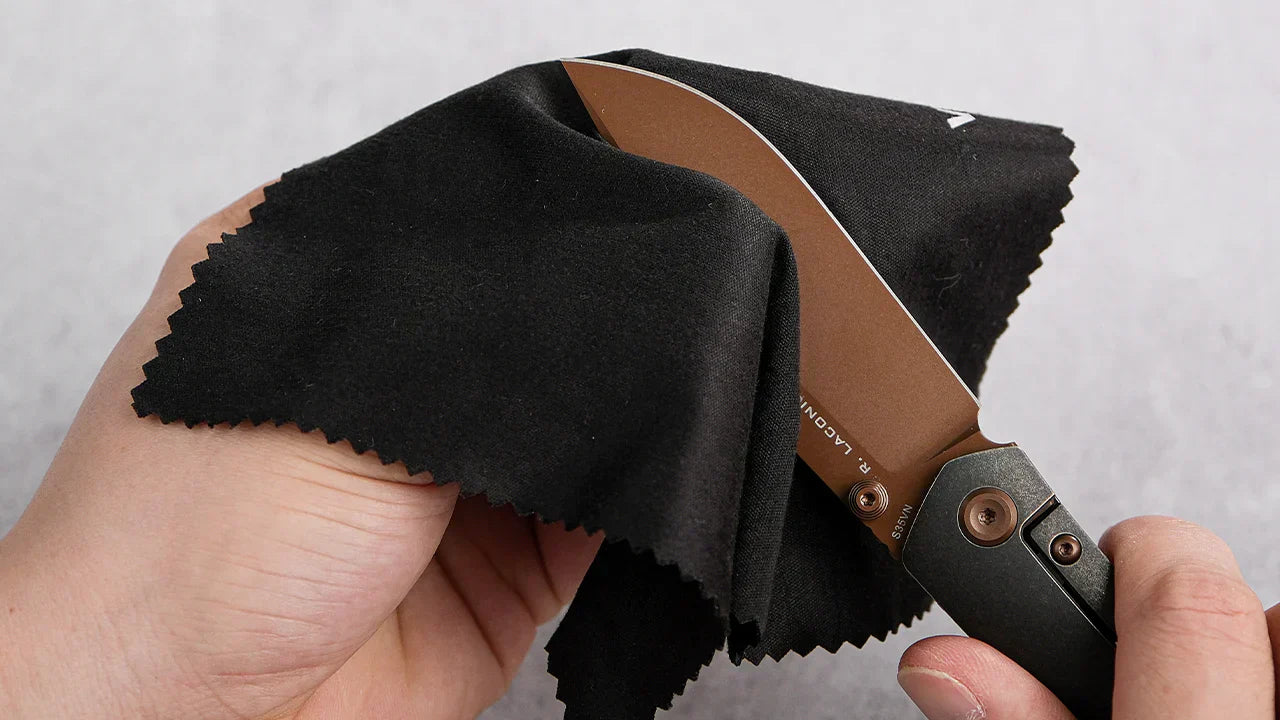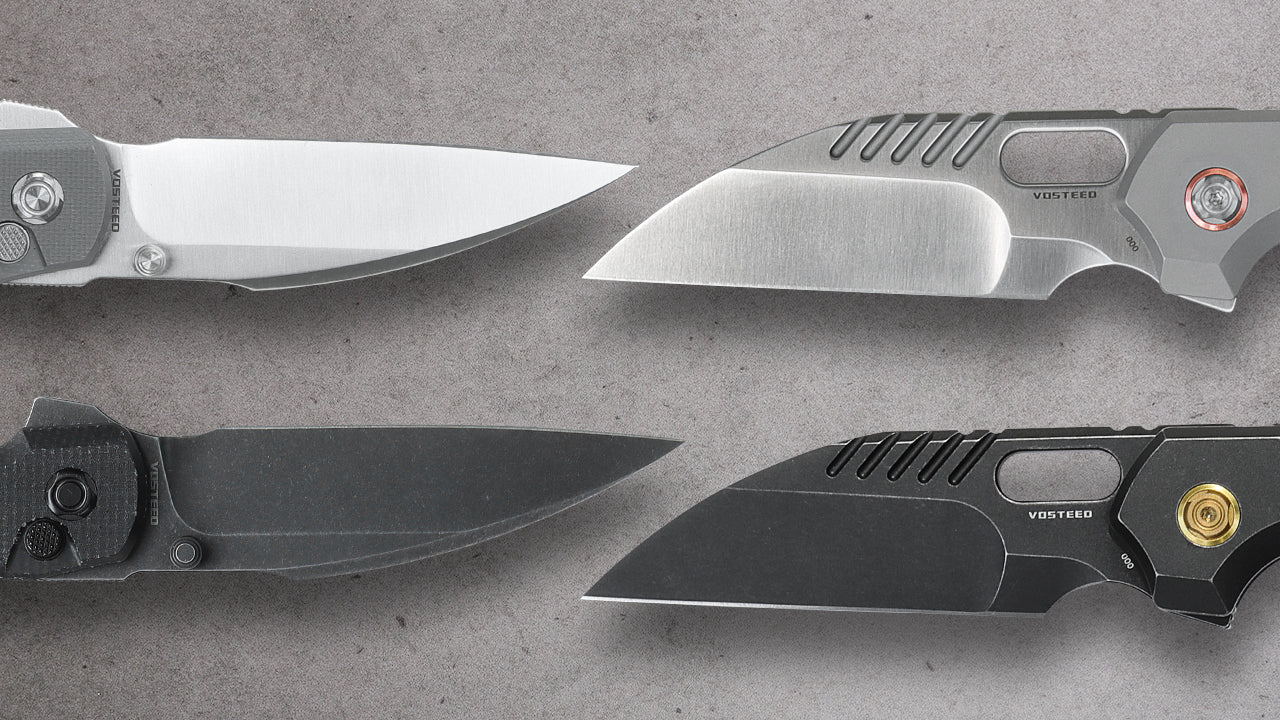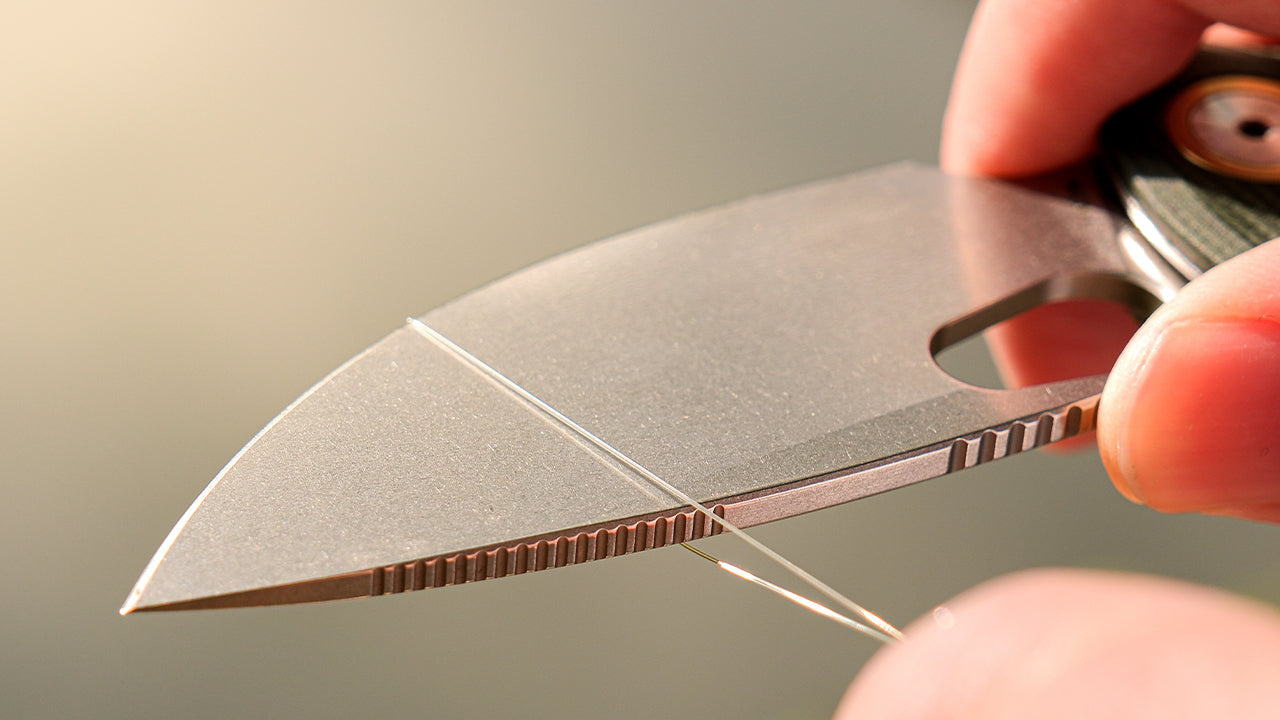Whether you carry a pocket knife for everyday tasks, outdoor adventures, or as a high-end collectible, there's one thing that remains true: maintenance. A clean knife not only performs better, but it also lasts longer. In this comprehensive guide, we'll walk you through the entire process of cleaning your pocket knife—disassembly to lubrication—so you can optimize your blade and keep your investment safe.
Why Cleaning Your Pocket Knife Is Important
Cleaning isn't just cosmetic—proper cleaning is needed to preserve functionality, safety, and mechanical integrity over the long haul.
Preventing Rust and Corrosion
Even high-end steels like M390 or S35VN are prone to corrosion under the right (or wrong) circumstances. Contact with sweat, humidity, acidic residue, or moisture from exposure while working in the field will accelerate the development of rust. Cleaning removes these impurities and prevents long-term damage.
Smooth Deployment and Functioning
Pocket knives rely on tight mechanical tolerances. Dirt, lint, and debris can accumulate in the areas surrounding the pivot, detent, and locking mechanisms—making for sticky or gritty deployment. Cleaning out these areas maintains your knife in as smooth and accurate a function as it was manufactured.
Extending the Lifespan of Your Knife
From utilitarian EDCs to premium collectibles, pocket knives are built to last—if cared for properly. Regular cleaning can reduce wear on moving parts, identifies incipient damage, and preserves the blade's performance, finish, and resale value.
Tools and Materials Required for Cleaning
Before you start, gather the following tools and materials:
- Soft cleaning rag or microfiber cloth
- Cotton swabs or toothpicks
- Rubbing alcohol or mild degreaser
- Knife lubricant (e.g., KPL or mineral oil)
- Torx screwdrivers (T6 and T8 are standard)
- Compressed air or soft brush
- Optional: Sharpening tools for touch-ups

Step-by-Step Guide to Cleaning a Pocket Knife
Now that you’ve gathered the right tools, it’s time to get hands-on. Whether you’re performing routine maintenance or a full teardown, this step-by-step guide will walk you through the proper cleaning process—ensuring your knife stays smooth, sharp, and ready for action.
Safe Disassembly Process
- Use a clean and well-lit working area with a tray to contain small parts.
- Use the correct Torx screwdriver to remove handle screws.
- Carefully separate the scales and liners, paying attention to washer or bearing placement.
- Remove the blade gently. Treat it as sharp at all times.
Cleaning the Blade and Internal Components
- Blade: Thoroughly clean with rubbing alcohol to dissolve adhesives, residue, and oils. Swab or soft cloth clean pivot hole and spine.
- Pivot washers/bearings: Gently remove dirt. For caged ceramic bearings, avoid soaking—instead, clean thoroughly and ensure that no grit is present in cages.
- Liners & handle scales: Brush or blow out lint and dust from the pocket. Alcohol may be used for hard deposits on stainless steel or titanium.
Lubrication and Reassembly for Optimal Performance
With everything cleaned and ready, it’s time to put your knife back together. Proper lubrication and careful reassembly will ensure smooth deployment, solid lockup, and long-term performance:
- Apply one drop of lubricant to each side of the pivot and to the detent ball track.
- Assemble in reverse order. Make sure the washers or bearings are seated.
- Tighten the pivot screw slowly—stop when there is no more blade play, and motion is smooth.
- Replace the pocket clip if removed, and conduct deployment tests.

Important Note: While this guide outlines the process of knife maintenance in detail, we do not encourage disassembly as improper teardown can compromise mechanical performance and even cause injury.
Alternative Cleaning Techniques for Non-Disassemblable Knives
If your knife cannot be disassembled:
- Open the blade and wash under warm running water and brush with a soft brush.
- Wipe around the pivot, liners, and lock bar with a cotton swab soaked in alcohol.
- Blow out any excess moisture with compressed air.
- A light application of lubricant on the pivot and detent ball track.
Material-Specific Maintenance Tips
Proper cleaning also requires knowledge of what your knife is constructed of:
Blade Steels
- M390, Nitro-V, S35VN: Great corrosion-resistant high-end stainless steels but still should be kept oiled every so often, especially after wet use.
Handle Materials
- Micarta: Absorbent—do not soak or clean with oil-based products. A damp cloth works best.
- G10: Low-maintenance and chemical-resistant. Soap and water if dirty.
- Titanium: Often anodized. Alcohol is fine, but avoid abrasives that will dull the finish.
Knowing your materials lets you clean correctly without risking damage.
Sharpening and Final Touches
When the knife is reunited, examine the edge. A couple of passes on a ceramic rod or guided sharpener will restore the edge within minutes. Clean up metal dusting after sharpening, wipe the blade with a final oil coat, and ensure all screws are securely tightened.
Your knife should now look and function like new.

Common Mistakes to Avoid
A majority of users unconsciously destroy their knives through careless cleaning. Beware of the following pitfalls:
- Over-oiling: Too much oil sucks in dirt. Use just a drop or two.
- Not drying: Water in a sealed knife is a corrosion pit.
- The inappropriate oils: WD-40 and 3-in-1 oils are not suitable—they can gunk up or destroy some materials.
- Neglecting the detent ball track: A dirty detent track means gritty action. Clean and lightly oil it every time.
FAQs on Pocket Knife Cleaning and Maintenance
Q1: How Often Should I Clean My Pocket Knife?
A monthly cleaning is a good rule of thumb for most EDC users. Clean more often if exposed to dust, moisture, or heavy outdoor use.
Q2: What’s the Best Way to Remove Rust from a Blade?
Use a rust eraser or fine-grade steel wool with light pressure. Wipe with alcohol and follow with a thin coat of protective oil.
Q3: Can I Clean My Knife Without Taking It Apart?
Yes. A toothbrush, alcohol swabs, and canned air can do a lot—even with partial disassembly.
Q4: How Do I Keep My Knife in Top Condition for Daily Use?
Keep it consistent. Clean every month, oil sparingly, sharpen often, and don't pry or twist with the blade. Store in a dry place.
Final Thoughts
Cleaning your pocket knife is not all about appearance—it's a matter of respect for craftsmanship and desire for performance. Whether you're using the best pocket knife you could find for everyday carry or a cherished collectible, maintenance keeps your blade sharp, secure, and ready.
At Vosteed, we produce knives that are not just high-performance but also low-maintenance. From ubiquitous Torx hardware to caged ceramic bearings and durable finishes, our knives are built for the individuals who use them—and the individuals who service them.
Take the time to clean it correctly, and your knife will never let you down.





Leave a comment
All comments are moderated before being published.
This site is protected by hCaptcha and the hCaptcha Privacy Policy and Terms of Service apply.